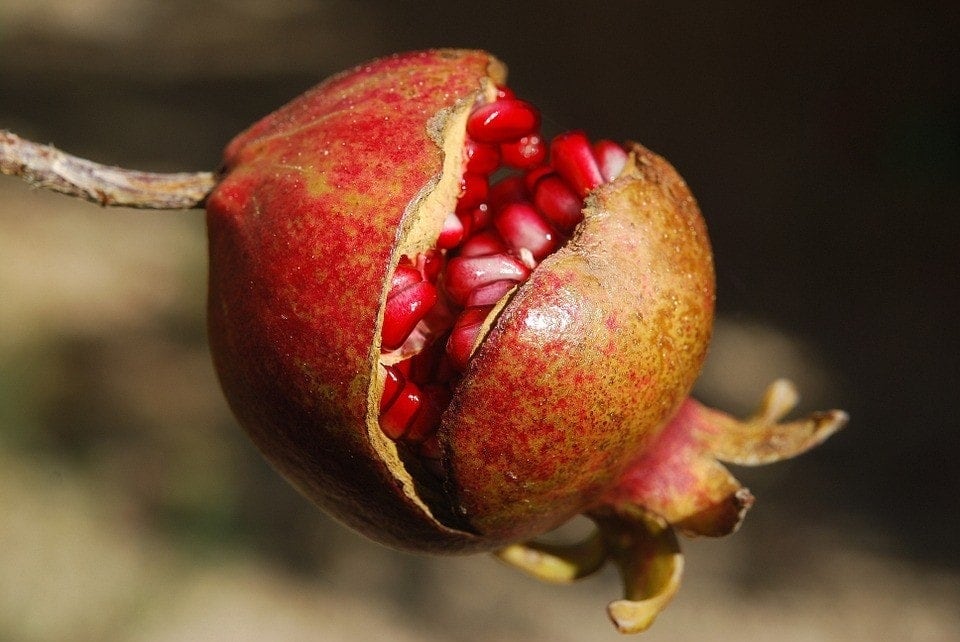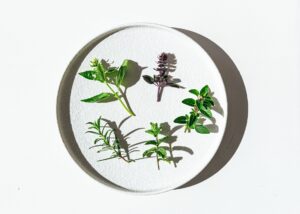Polyphenols belong to the phytamines. These are plant substances that are just as important for our health as vitamins.
We can see and taste many polyphenols because they shape the color, smell and taste of fruit and vegetables. The main representatives are phenolic acids and flavonoids, as well as coumarins and lignans.
We ingest an average of 200-300 mg phenolic acids and 50 to 100 mg flavonoids per day.
The phenolic acids, also called tannic acids, include caffeic acid, ferulic acid and ellagic acid. They give many foods their bitter taste. Ellagic acid, a component of green tea, has been on everyone’s lips lately because of its anti-carcinogenic properties. It can presumably prevent genetic damage caused by carcinogenic substances (cigarette smoke, air pollution, etc.).
The 4’000 flavonoids known today include in particular water-soluble plant pigments, for example flavones, anthocyanins and proanthocyanidins, including quercetin, kaempherol and myricetin. They give cherries, grapes, medlars and apricots their bright colors and have a variety of health-promoting properties. Many of the effects of medicinal teas are now attributed to the flavonoids they contain.
Their consumption is extremely beneficial to health
Above all, their antioxidant effect is emphasized, i.e. they have the ability to scavenge radicals and thereby protect cells from antioxidant stress. According to the latest research, some polyphenols are even stronger radical scavengers than vitamins C, E and beta-carotene. These include, for example, the polyphenols contained in red wine. Their antioxidant effect is 40% higher than that of a corresponding amount of vitamin E. They also prevent heart attacks. This cardio-protective effect is likely due to their ability to prevent fat oxidation and reduce the aggregation of platelets. Polyphenols may have an anticarcinogenic, antimicrobial, immunomodulatory, antioxidant and anti-inflammatory effect and thus prevent cancer and thrombosis. They are also supposed to protect against age-related visual disturbances (macular degeneration, cataract), alleviate hay fever, sinusitis and asthma symptoms and prevent hot flashes during menopause.
Many of these effects can currently only be insufficiently scientifically proven. But there is a lot of research going on to create clarity.
They sit primarily in or directly under the peel
Therefore, give preference to whole grain products and eat the peel with fruit and vegetables. In addition, buy outdoor products whenever possible. They usually contain higher amounts of polyphenols than those from greenhouses.
If you want to take polyphenols in addition, then you can choose between different products. Some contain the polyphenols of red wine, others a mixture of quercetin, rutin, hesperidin, etc., or a combination with other nutrients such as vitamins.
Side effects of these products are usually not known, with the exception of catechin, which can possibly lead to fever and anemia, i.e., side effects that can be stopped by discontinuation.
In this case, it is advisable to ask your pharmacist before taking polyphenols whether any interactions with your medication can occur and must be taken into account.
These foods are particularly rich
Polyphenols are mainly found in the outer layers of vegetables, fruits and whole grains.
Kale (1-1.5 g / kg), whole wheat (0.5 g / kg) and fresh berries (approx. 1 g / kg) are particularly rich in phenolic acids. Green / black tea, walnuts and grapes also contain a lot of phenolic acids. Even coffee is represented with 7 mg of caffeic acid per cup. It is said to provide most of the usable polyphenols, which is why some medical professionals recommend one or two cups of coffee a day.
Fruit peels (grapes, apples) and the outer layers of vegetables are rich in flavonoids, for example: grapevines (leaves, berry skin), olive leaves, broccoli, endive, kale, onions, cranberries, tomato juice, red wine (over 50 mg / kg). Slightly less, around 10-50 mg / kg, is found in orange juice, tomatoes, apples, cherries, and grapes. Beetroot juice, onions, nuts, grains and soybeans also contain many polyphenols and, as already mentioned, red wine. Because of the way it is made and because the berry skins in particular are rich in polyphenols, it contains more of them than white wine. The dark Burgundy grapes in particular are ideal sources of polyphenols. But if you are a beer drinker, that doesn’t have to be a reason for you to switch to red wine. Because there is also beer that is characterized by a high polyphenol content. This includes the dark varieties, especially Guinness.
Polyphenols are heat stable
In contrast to the vitamins, you don’t have to take polyphenols into account when cooking. They remain largely stable when heated. Some even develop their full effect because they are released from the cell wall. This applies to tomatoes, for example. They are healthier after cooking than before. Preserving fruit for compote makes perfect sense and is a really healthy dessert, especially if it still contains the peel.







